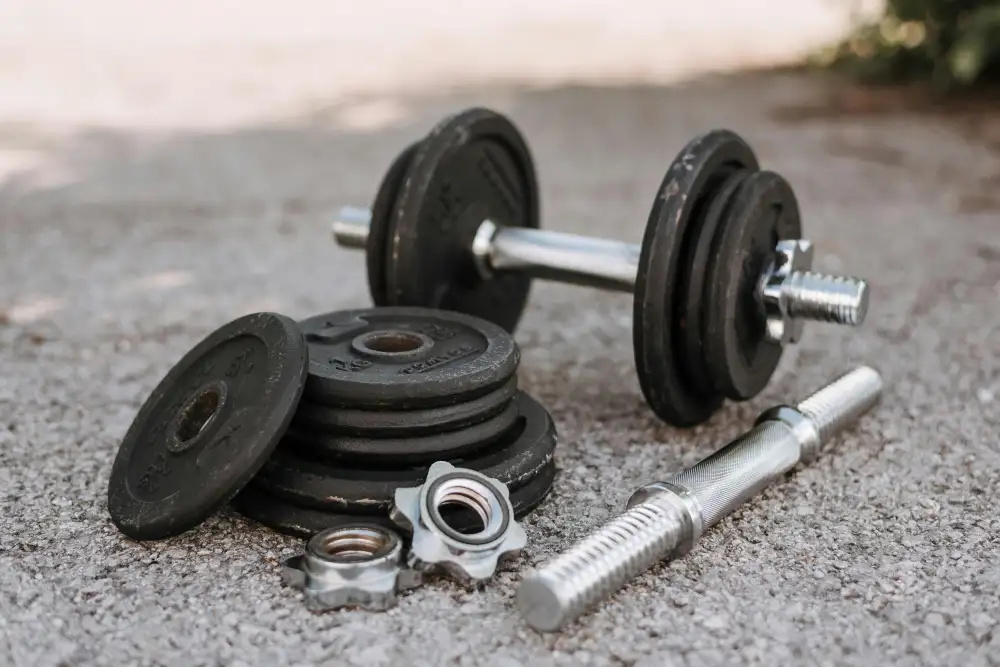Restore the Shine: Expert Tips for Cleaning Your Cast Iron Skillet at Home

- Gathering the necessary cleaning supplies
- Step-by-step instructions for cleaning a cast iron skillet
- Preparing the skillet for cleaning
- Using hot water and a brush to remove food residue
- Avoiding harsh cleaning agents and abrasive materials
- Drying the skillet thoroughly to prevent rust
- Seasoning the cast iron skillet after cleaning
- Applying a thin layer of oil to the skillet
- Heating the skillet to create a protective coating
- Tips for maintaining a clean cast iron skillet
- Avoiding soaking the skillet in water for long periods
- Using a gentle touch when cleaning to preserve the skillet's seasoning
- Storing the skillet in a dry place to prevent moisture buildup
Cleaning your cast iron skillet is not just about maintaining its appearance, but also ensuring its longevity and performance in the kitchen. A clean skillet not only cooks food evenly but also enhances flavors. Neglecting proper cleaning can lead to a buildup of residue, which can affect the taste of your dishes and even cause rust. In this article, we will guide you through expert tips for cleaning your cast iron skillet at home, so you can restore its shine and continue to create delicious meals with love.
Gathering the necessary cleaning supplies
To clean your cast iron skillet effectively, it's important to gather the necessary cleaning supplies. Firstly, you'll need a stiff-bristled brush or sponge specifically designed for cast iron. This will help to remove any stubborn food residue without scratching the surface. Additionally, have some mild dish soap on hand for tougher stains. Avoid using harsh cleaning agents as they can strip away the skillet's seasoning. Lastly, make sure you have a clean towel or paper towels for drying the skillet thoroughly after cleaning. With these supplies ready, you'll be well-equipped to restore the shine of your cast iron skillet at home.
Step-by-step instructions for cleaning a cast iron skillet
a. Preparing the skillet for cleaning: Allow the skillet to cool completely before starting the cleaning process. This will prevent any potential burns or accidents.
b. Using hot water and a brush to remove food residue: Rinse the skillet with hot water to loosen any stuck-on food particles. Gently scrub the surface using a soft brush or sponge to remove any remaining residue.
c. Avoiding harsh cleaning agents and abrasive materials: Do not use soap, as it can strip away the skillet's seasoning. Similarly, avoid using abrasive materials like steel wool, which can damage the surface.
d. Drying the skillet thoroughly to prevent rust: After washing, dry the skillet completely using a clean towel or by placing it on low heat on your stovetop. Moisture can lead to rusting, so ensure it is completely dry before storing.
Remember, proper cleaning is essential for maintaining your cast iron skillet's longevity and performance.
Preparing the skillet for cleaning
Before you begin cleaning your cast iron skillet, it's important to prepare it properly. Start by allowing the skillet to cool down completely after use. Once it has cooled, remove any excess food residue by scraping it off with a spatula or a plastic scraper. Be gentle to avoid scratching the surface of the skillet. Avoid using metal utensils as they can damage the seasoning. Once you have removed the food residue, you're ready to move on to the next step of cleaning your cast iron skillet.
Using hot water and a brush to remove food residue
To remove food residue from your cast iron skillet, start by rinsing it with hot water. This will help to loosen any stuck-on bits. Then, use a brush or sponge with stiff bristles to scrub the surface of the skillet. Be sure to scrub gently but firmly, focusing on areas where food may be stuck. The hot water will help to break down the residue, making it easier to remove. Avoid using soap or harsh cleaning agents as they can strip away the skillet's seasoning.
Avoiding harsh cleaning agents and abrasive materials
When it comes to cleaning your cast iron skillet, it's crucial to avoid using harsh cleaning agents and abrasive materials. These can strip away the skillet's seasoning and damage its surface. Instead, opt for gentle cleaning methods that preserve the skillet's natural non-stick properties. Stick to using hot water and a brush or sponge to remove any food residue. If necessary, you can also use a small amount of mild dish soap. Just remember to rinse thoroughly and dry the skillet completely to prevent rust formation. By avoiding harsh cleaning agents and abrasive materials, you'll ensure that your cast iron skillet stays in top condition for years to come.
Drying the skillet thoroughly to prevent rust
After cleaning your cast iron skillet, it is crucial to dry it thoroughly to prevent rust. Leaving any moisture on the surface can lead to the formation of rust over time. To ensure your skillet stays in pristine condition, use a clean towel or paper towel to wipe away any excess water. Make sure to reach all the corners and crevices, as these are areas where moisture tends to accumulate. Once you have dried the skillet completely, you can proceed with seasoning it to create a protective coating that will keep it rust-free and ready for future cooking adventures.
Seasoning the cast iron skillet after cleaning
After cleaning your cast iron skillet, it is important to season it properly to maintain its non-stick surface and prevent rusting. To do this, apply a thin layer of oil to the entire surface of the skillet, including the handle. Use a paper towel or cloth to spread the oil evenly. Next, place the skillet on a stovetop burner set to medium heat. Allow the skillet to heat up for about 5 minutes, or until you start to see the oil smoking slightly. This process creates a protective coating on the skillet's surface. Once heated, remove the skillet from the heat and let it cool completely before storing it. Remember to repeat this seasoning process after each cleaning to keep your cast iron skillet in top condition.
Applying a thin layer of oil to the skillet
After cleaning your cast iron skillet, it's important to apply a thin layer of oil to prevent rust and maintain its seasoning. Start by heating the skillet over low heat until it's warm. Then, using a paper towel or cloth, apply a small amount of vegetable oil or melted shortening to the entire surface of the skillet, including the handle. Make sure to coat both the inside and outside thoroughly but avoid applying too much oil as it can become sticky. Once coated, continue heating the skillet for about 5 minutes to allow the oil to penetrate and create a protective coating. Remove from heat and let it cool completely before storing. This simple step will help restore the shine and ensure your cast iron skillet lasts for generations to come.
Heating the skillet to create a protective coating
To create a protective coating on your cast iron skillet after cleaning, you will need to heat it. This step helps to seal the oil into the skillet's surface, preventing rust and enhancing its non-stick properties. After applying a thin layer of oil, place the skillet on the stove over medium heat. Allow it to heat for about 5-10 minutes until it starts to smoke slightly. This indicates that the oil has polymerized, forming a durable layer that protects the skillet. Remember to use oven mitts or a towel when handling the hot skillet. Heating your cast iron skillet not only ensures its longevity but also enhances its cooking performance, making it a true kitchen essential.
Tips for maintaining a clean cast iron skillet
a. Avoid soaking the skillet in water for long periods. Excessive exposure to water can cause rust and damage the seasoning.
b. Use a gentle touch when cleaning to preserve the skillet's seasoning. Avoid using harsh scrub brushes or abrasive materials that can strip away the protective layer.
c. Store the skillet in a dry place to prevent moisture buildup. Moisture can lead to rust, so make sure the skillet is completely dry before putting it away.
By following these simple tips, you can ensure that your cast iron skillet remains clean and well-maintained, ready to create delicious meals for years to come.
Avoiding soaking the skillet in water for long periods
To maintain the longevity of your cast iron skillet, it is crucial to avoid soaking it in water for extended periods. While a quick soak can help loosen stubborn food residue, leaving the skillet submerged for too long can lead to rust formation. Instead, opt for a gentle scrub with hot water and a brush to remove any leftover food particles. Remember, a little extra effort in cleaning will go a long way in preserving the quality of your beloved cast iron skillet.
Using a gentle touch when cleaning to preserve the skillet's seasoning
When it comes to cleaning your cast iron skillet, it's important to use a gentle touch in order to preserve its seasoning. Avoid scrubbing too vigorously or using harsh cleaning agents that can strip away the protective layer. Instead, opt for a soft brush or sponge and mild dish soap if necessary. Remember, the seasoning on your skillet is what gives it that beautiful non-stick surface, so handle it with care and you'll be rewarded with a skillet that only gets better with time.
Storing the skillet in a dry place to prevent moisture buildup
To ensure the longevity of your cast iron skillet, it is crucial to store it in a dry place. Moisture buildup can lead to rust and damage the skillet's seasoning. After cleaning and drying your skillet thoroughly, find a spot in your kitchen where it can be stored safely. Avoid storing it near the sink or any other area prone to moisture. A cool, dry cabinet or drawer is an ideal location. By keeping your skillet in a dry place, you will prevent any potential damage and maintain its quality for years to come.
In conclusion, maintaining a clean and well-maintained cast iron skillet is essential for both its longevity and the quality of your cooking. By following these expert tips for cleaning and seasoning, you can restore the shine and ensure that your skillet remains in top condition. A clean skillet not only enhances the flavors of your dishes but also prevents rust and improves heat distribution. So, take care of your cast iron skillet with love, and it will reward you with delicious meals for years to come.
Published: 12. 02. 2024
Category: Home



